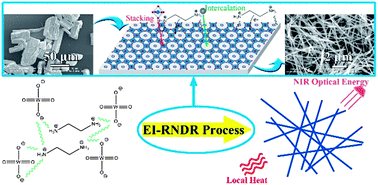Electrostatic-induced synthesis of tungsten bronze nanostructures with excellent photo-to-thermal conversion behavior†
Abstract
A simple one-step hydrothermal route is developed to synthesize one-dimensional (1D) hexagonal tungsten bronze (HTB)

* Corresponding authors
a
Department of Chemistry, Shanghai Key Laboratory of Molecular Catalysis and Innovative Materials, Laboratory of Advanced Materials and Collaborative Innovation Center of Chemistry for Energy Materials, Fudan University, Shanghai 200433, China
E-mail:
yitang@fudan.edu.cn
b Institute of Functional Nano & Soft Materials (FUNSOM), Soochow University, Suzhou 215123, P. R. China
A simple one-step hydrothermal route is developed to synthesize one-dimensional (1D) hexagonal tungsten bronze (HTB)

 Please wait while we load your content...
Something went wrong. Try again?
Please wait while we load your content...
Something went wrong. Try again?
G. Liu, S. Wang, Y. Nie, X. Sun, Y. Zhang and Y. Tang, J. Mater. Chem. A, 2013, 1, 10120 DOI: 10.1039/C3TA11479A
To request permission to reproduce material from this article, please go to the Copyright Clearance Center request page.
If you are an author contributing to an RSC publication, you do not need to request permission provided correct acknowledgement is given.
If you are the author of this article, you do not need to request permission to reproduce figures and diagrams provided correct acknowledgement is given. If you want to reproduce the whole article in a third-party publication (excluding your thesis/dissertation for which permission is not required) please go to the Copyright Clearance Center request page.
Read more about how to correctly acknowledge RSC content.
 Fetching data from CrossRef.
Fetching data from CrossRef.
This may take some time to load.
Loading related content
